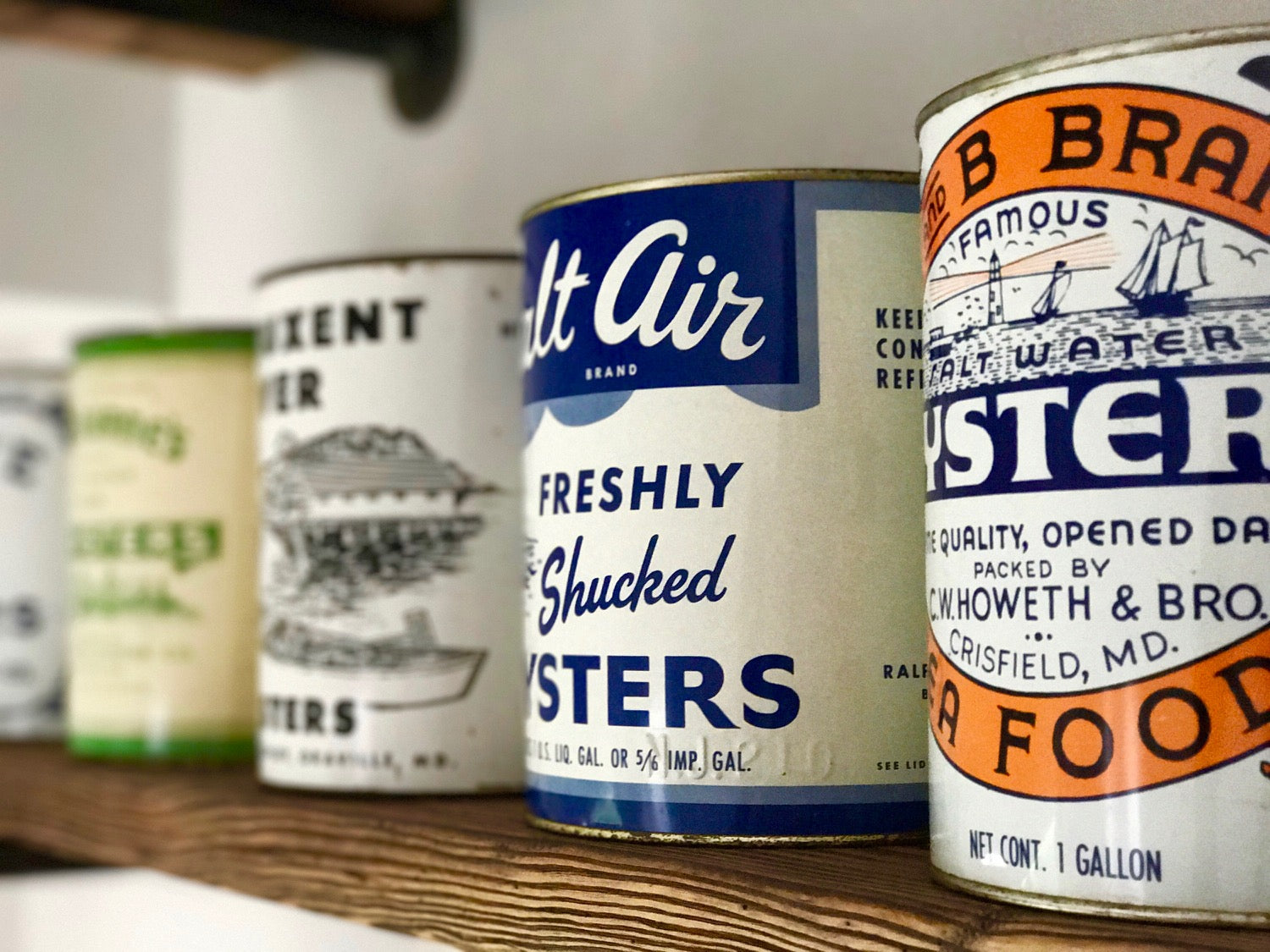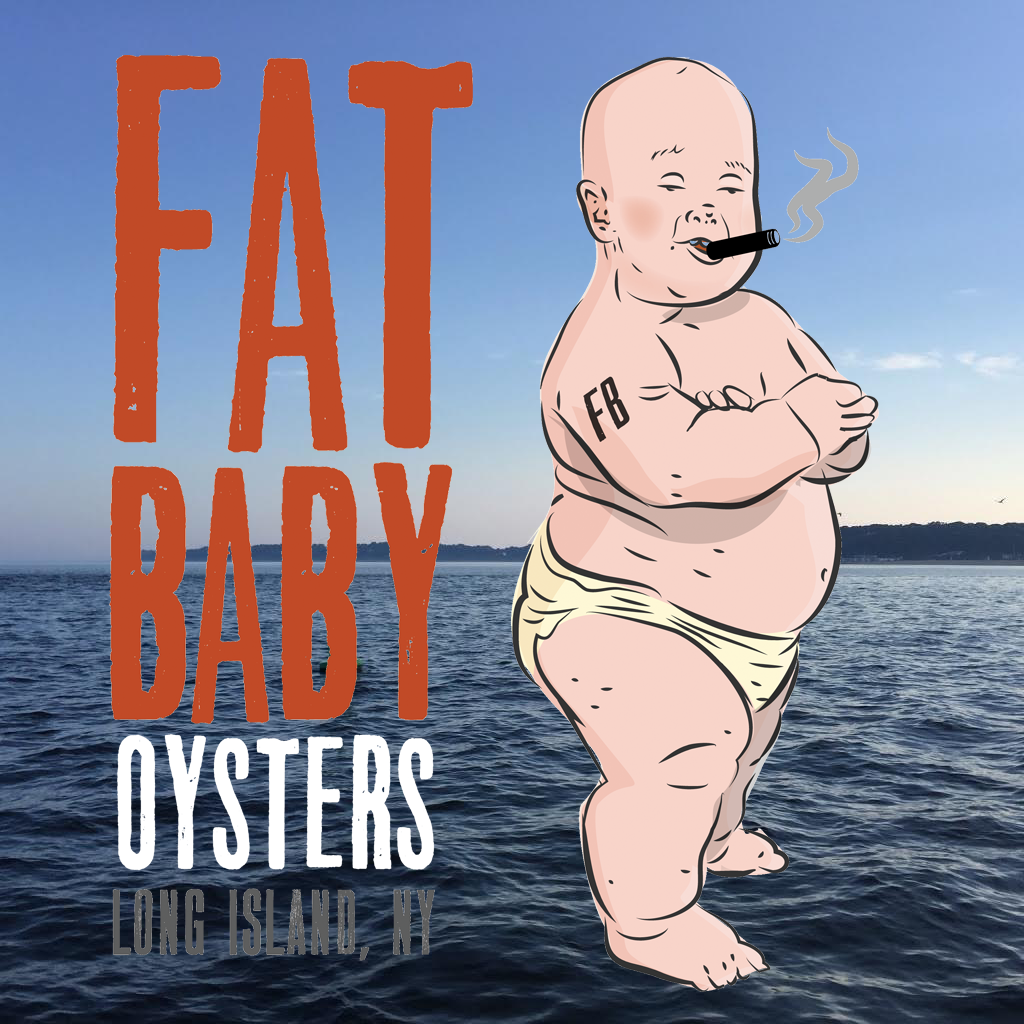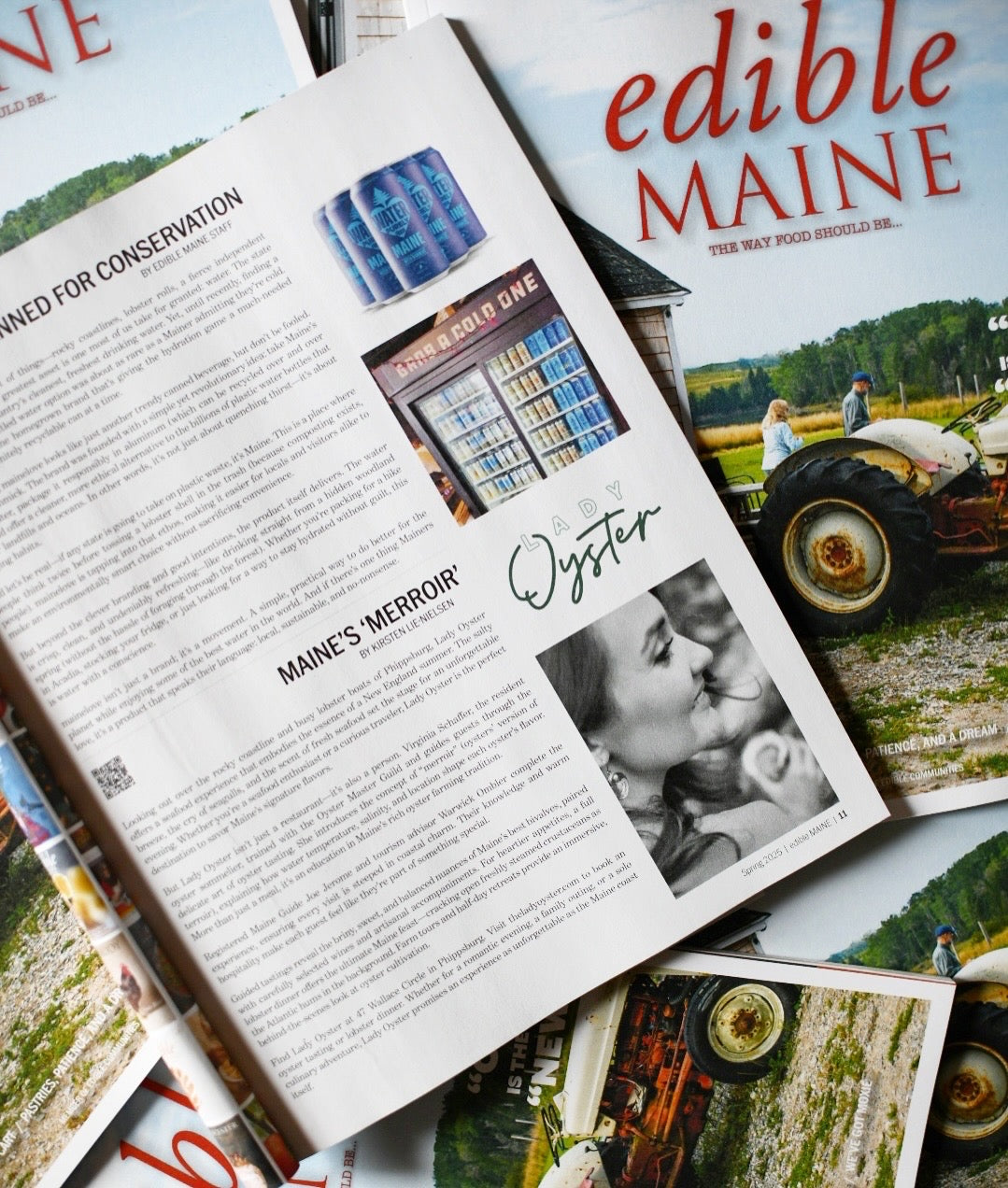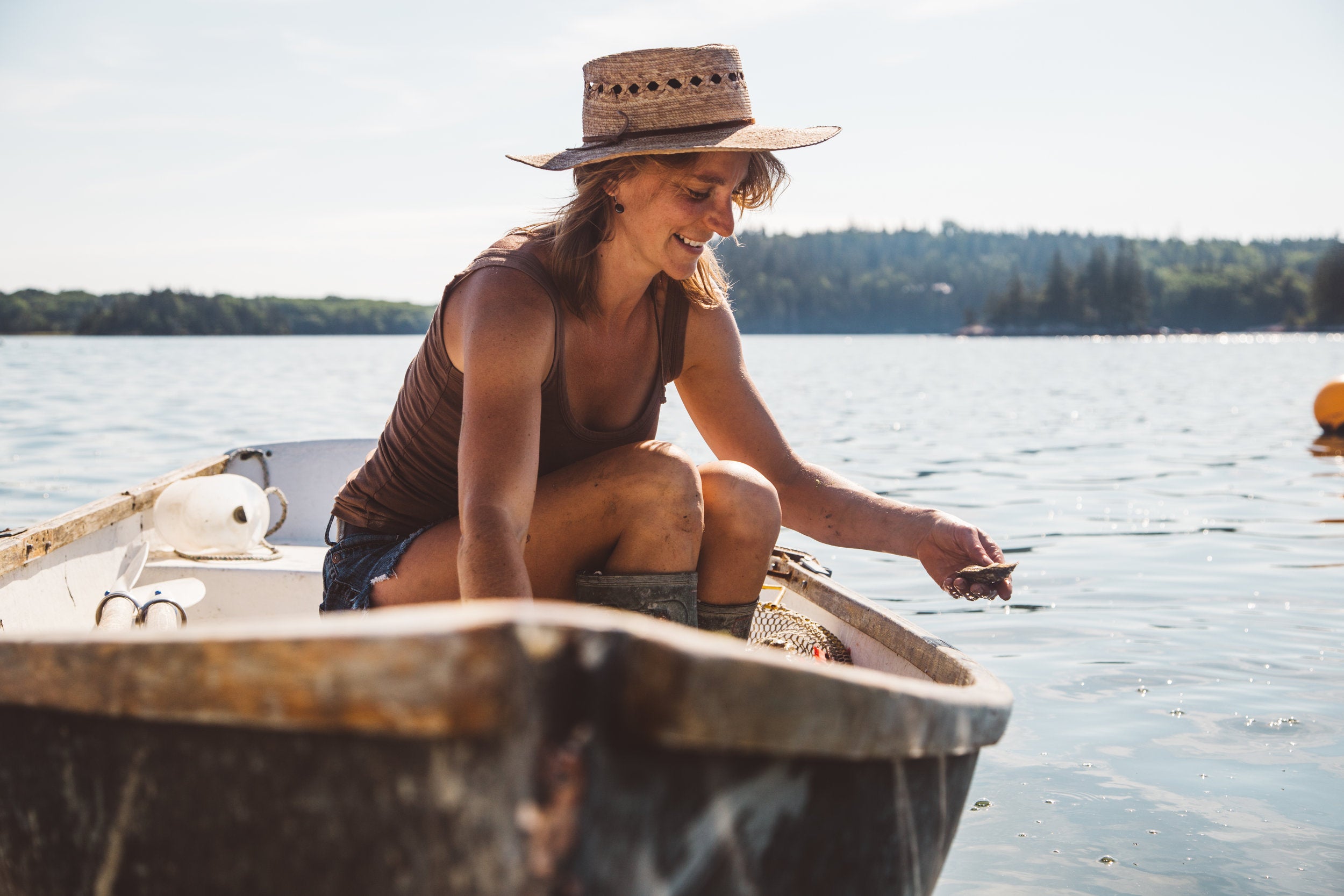The Story of Scott Sanner AKA @OysterTin

The words "vintage" and "wine" go really well together, but you wouldn't be too keen to hear "vintage" and "oysters" in the same sentence. That is what I always assumed, until I found Scott Sanner, a Maryland native and seafood aficionado. Also known as "Oystertin" on Instagram, Scott has a passion for the unique antique vertical of collecting old oyster tins.
I am blown away by their beauty and the colorful imagery... Pure marketing genius! It marvels me as well that Scott has been able to source such a wide variety.
With that, I present to you the Story of Scott, the man behind "Oystertin".
Can you describe your background and how you got into collecting oyster tins? How long have you been doing this?
Scott: I’ve lived in Maryland my whole life. When I was a kid, I spent time in the summers with family in St. Mary’s County. We fished and crabbed on the Chesapeake and it was during this time I gained a true affinity for the Chesapeake Bay. When we got married, my wife and I moved to Edgewater, MD, and ultimately fulfilled the dream of a house on the water. As we were decorating the house, we searched through local antique stores for vintage and most importantly, authentic items from the Chesapeake Bay region. We each take a slightly different approach with the décor. As an example, my wife made candle holders out of old brass boat propellers and found a mirror framed with wood from the famous Ocean City boardwalk, including part of the white paint marking the tram travel lane. I take a slightly different approach and have a vintage 1949 Evinrude outboard hanging in the house, which I find beautiful and she “tolerates.” (Tolerates... I love this - Virginia)
During these trips to antique stores in search of vintage items, we came across a gallon sized oyster tin from the early 1960’s and liked it as a single decorating item. As we continued our weekend trips to antique stores, we came across more and different types of old oyster tins. The first led to the second, which led to the third, which led to a collection over the course of several years.

 I see that most are found in the Chesapeake Bay area. Do you go hunting for them primarily in the Maryland area? Do you have any collector tips?
I see that most are found in the Chesapeake Bay area. Do you go hunting for them primarily in the Maryland area? Do you have any collector tips?
Scott: I search all of the obvious places for oyster tins including antique stores, ebay, craigslist, etsy and auctions. I’m particular about condition, particularly dent free cans, so I have the most success finding cans in places where I can see them in person. I’ve had good success finding them at antique stores and the vast majority of my rare cans have been bought from private collections. Bufflehead Vintage & Antiques has been particularly helpful at finding specific tins I’ve been chasing. That said, we search stores all over the coastal towns of Maryland and Virginia. My sister and her husband also look for cans for me and stop at antique stores as they come across them in their travels. They recently stopped at an antique store in Sanibel, Florida, which is probably one of the last places you’d expect to find old oyster tins from the Chesapeake region, but they recently acquired a collection and had about 20 cans in their store.
Regarding tips for the beginning collector, I’d suggest starting with what collectors refer to as “the book.” It’s titled Oyster Cans with Price Guide and was written by Jim and Vivian Karsnitz. It has a picture of nearly every oyster tin ever produced as well as oyster related items. The premise of the price guide is based on rarity of the can. The book was published 25 years ago and as with any price guide, it’s tough to stand the test of time. The real value of the book is the identification of all the cans with pictures.
Price is a subject in and of itself and can vary from $20 for a stock tin to thousands depending on rarity and condition. Before making a purchase, do your research and make sure you have a good sense of what a given can is worth. It can be common to see two different sellers asking wildly different amounts for the same can in similar condition. I keep a log of sale prices from ebay with their condition so I have a good sense of their price range. I’ve referenced this list many times when I’ve come across the same can in an antique store at a later date. I always try to buy at a fair price and have walked away from many more tins than I’ve purchased.
What do you like about the oyster tins? What kind of story do they tell?
Scott: I love the graphics and colors different packers used on their tins. Oyster tins are a study in early 20th century business and marketing. If you think about it, all of the different companies sold the exact same product, which came from the exact same place (oysters from the Chesapeake Bay). To avoid a commoditized price war, Packers differentiated their product by decorating the outside of the tin. Brand loyalty was developed based on appearance and as a result, early tins developed into art.
The majority of the early oyster tins from the 1920’s and 1930’s featured bail handles (similar to modern paint cans) and were made of very thick metal. As time progressed, Packers sought ways to decrease cost and therefore eliminated the bail handles. In addition, they used thinner metals as they discovered it was sufficient for “one time use.” There is a marked difference in weight from tins produced in the 1920’s and 1930’s versus those produced in the 1960’s.
I also find it amazing that so many tin cans have lasted as long as they have. Some of the early bail handled tins are approaching 100 years old. Many were thrown away after the contents were used, but it’s hard to believe how many were kept. I’m sure many of them held nuts and bolts in garages for a long time before their potential value was realized.
Which ones on your Instagram are your favorites?
Scott: The oyster tins on Instagram only represent a portion of my collection. It’s hard to pick a single favorite as I like many of the early bail handled tins from Baltimore. If I had to pick a favorite, it would probably be the tin from W.H. Killian Company. It’s a fairly rare oyster tin and has great graphics and color. I love the bold red color and the graphic of the mermaid putting oysters in the tin.

One of Scott's favorites on the right, W.H. Killian Co.
What do you do with your collection? Would you ever consider selling any of them?
Scott: I have my collection displayed on shelves in our foyer. People who visit really enjoy the history and different graphics on all of the cans. Of those who visit, many point out the Christy’s oyster tin as their favorite. They associate the figure on the tin to Elvis, which undoubtedly helps to sway their choice.
I’d be reluctant to sell many in my collection, but do have duplicates of some, which I’d be willing to sell.

Christy's on the right: a crowd favorite.
Are there any oyster tins you’re currently chasing?
Scott: I’m currently looking for two tins that are pretty tough to find. The first is a gallon sized red Tilghman in either variety and the second is an Originalpac, which I personally think has the best graphics of all of the tins.



